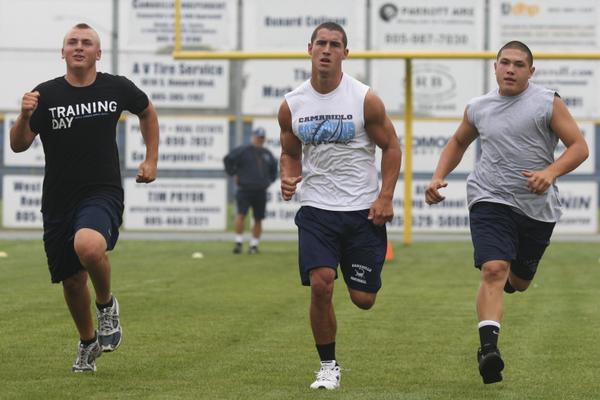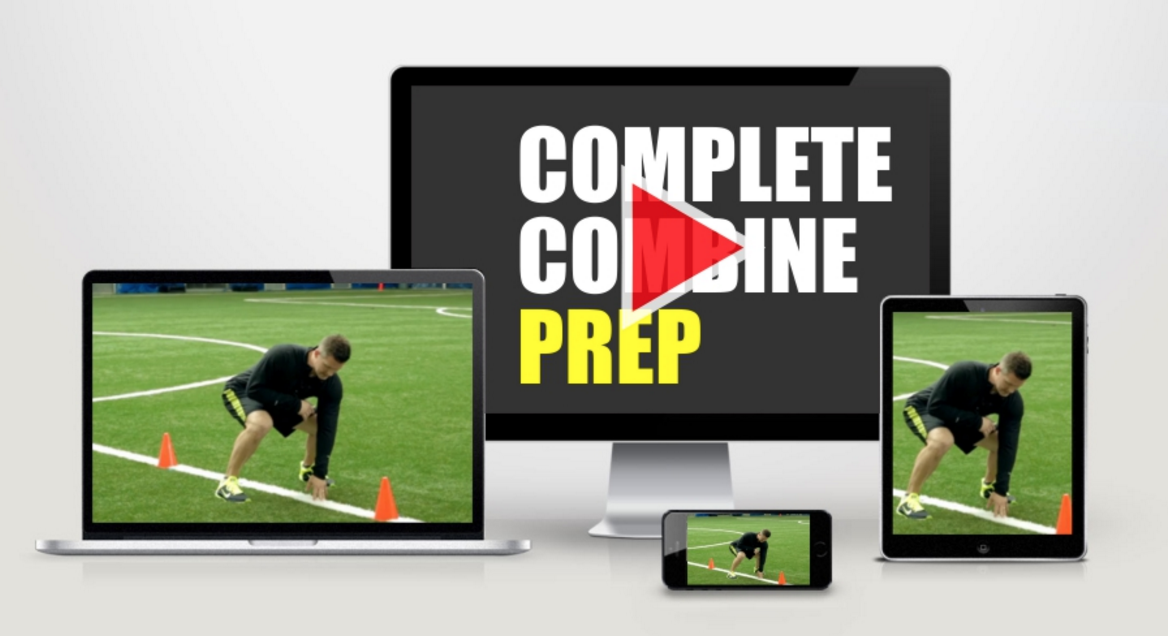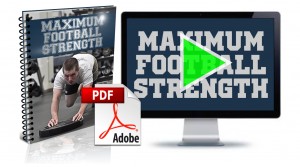How to Develop Explosive Speed For Football Players
By: Jim Kielbaso
Creating a football speed program is one of the most important things a coach can do for his team. Football is a game of speed, and I’ve seen it impact a game in more ways than I can count. I’ve also seen a lot of coaches and athletes struggle with developing speed, so I’m going to explain some of the principles that must be understood when it comes to speed for football players.
An effective football speed training program should focus on teaching athletes how to move efficiently and increase the amount of force they are able to put into the ground during this movement. Unfortunately, most coaches are still wasting a tremendous amount of their athlete’s time and energy focusing on doing drills for the sake of doing drills, without understanding how these drills are supposed to help speed for football players. They find a bunch of drills on the internet or at a camp, put them together in whatever order feels good to them, and call it a football speed training program.
Without a thorough understanding of how speed is developed, your football speed training program will never produce optimal results. Let’s take a look at the important factors involved in an effective football speed training program.
Four Factors of an Effective Football Speed Training Program
An effective program has to take important pieces from several areas of science: physiology, neurology, biomechanics and motor learning. Note that “drills” are one of the scientific areas we need to drawn upon. Drills are simply a way to help develop one of these areas. Therefore, understanding how a particular drill affects the human body is the key to drill selection and football speed training.
Looking to improve your football players’ ability to accelerate? Get your FREE acceleration checklist here.
Biomechanics & Motor Learning
Athletes must learn how to put force into the ground in a way that will help them move more efficiently. While not everyone needs to run, cut and accelerate the exact same way, there are certainly ways that are more effective than others when it comes to speed for football players. Understand and teach these techniques to young athletes so they aren’t making gross errors in their movement.
Select drills that teach athletes the best way to apply force into the ground. They also need to be taught in a way that creates real movement changes. I often see football speed programs that look like they address mechanics on the surface, but when you get right down to it, it’s all just fluff. Things like A-skips, B-skips, ladder drills and mini-hurdle drills do nothing for most football players, yet we see them shoved down their throats all the time.
Rather than including a drill for the sake of including drills, understand what each drill teaches. Also, only select the ones that are pertinent. Wall drills, for example, can be used to teach the mechanics of a forward lean, high knees and forceful backward push during acceleration. If, however, you’re just throwing the drill into your program because you saw someone else do it, the drill is a waste of time. It’s absolutely vital that you take the time to teach the athletes HOW to do the drills and HOW to move.
Keep in mind that motor learning is very specific to the skill you are practicing. That means that you are only going to get better at the exact skill you are practicing. Very little transfer will take place from one movement to another. In other words, practicing skips and ladder drills will get you better at skips and ladder drills. Practicing sprinting and acceleration will get you better at sprinting and acceleration. What do you want to get better at?
Of course, some movements are difficult to learn and require “lead-up” drills. The wall or tall & fall drills are examples of drills that help athletes learn how to accelerate. A drill may work perfectly for one athlete, but not all of them, so you need several ways of teaching the same skill. Always keep in mind, however, that the goal is to teach athletes how to run faster, not how to perform a drill. The drill should always be a means to an end.
Physiology
Once mechanics are addressed, we need to get athletes stronger so they can produce more force. If the increased force is put into the ground with good mechanics, the athlete will run faster. If the mechanics are not efficient, the force will not be used as effectively as possible and your results will be sub-par.
Most strength programs today include some version of a squat, which is a great place to start developing strength and ultimately speed for football players. We’re not going to get into the details of squat technique, but correct form should always be used.
A good football speed training program should also include work on the hamstrings, groin and hips through exercises like
- glute/ham raises
- RDL’s
- hip extension
- hip flexion
- glute/hip bridges
- leg curls
- slideboard inner thigh
- side lunges
- 3-D lunges
- Nordic hamstring exercise
I see these exercises omitted from way too many programs. So make sure you are addressing all of the muscles involved in football speed. You don’t have to do every one of these exercises every day, but the hips, groin and hamstrings should be taken as seriously as the squat.
Be progressive with every exercise you choose to maximize your strength gains. Simply working hard is a great start, but carefully documenting your progress is a much more efficient way to develop strength. Choose a system of progression that works for you. Then, stick to it for several weeks at a time before you change anything in your program. The human body takes time to adapt to a stimulus like a strength program. Be patient and stick with your program to develop strength.
Neurology
Increasing force through physiological changes is important to increasing football speed, but increasing the speed in which your body produces that force is just as important. The ability to produce force quickly is often referred to as power. In speed and agility, power is important because you need to put force into the ground as quickly as possible in order to move fast. Strength training will help make this happen, but explosive training will make it happen more efficiently.
Explosive training is all about optimizing your nervous system so your muscles will contract quickly and in a coordinated fashion that produces maximal power. This can be accomplished through training methods such as plyometrics, weighted sleds or resisted movement, Olympic lifting, medicine balls and high speed strength exercises.
The key to enhancing your neurology is to perform the exercises with precision, maximum speed and maximum effort. This means that you’ll be performing relatively low reps (less than 10 reps per set) with each exercise having slightly different guidelines. You’ll also want to perform these exercises when you’re fresh and give yourself long breaks between sets. This allows you to give maximal effort on every rep, which will train your body more effectively.
Combining these important areas of science will help you create the most effective football speed training program possible. Understand the purpose of each drill or exercise and apply them in the most efficient manner possible. If you follow the guidelines outlined in this article, you’ll be on your way to developing explosive speed for football players.
Jim Kielbaso
To see Coach Jim Kielbaso’s speed training system for football players, go check it out here at
Complete Football Speed.
Recommended Athletes Acceleration Products






1 Comment for “How To Develop Explosive Speed For Football Players”